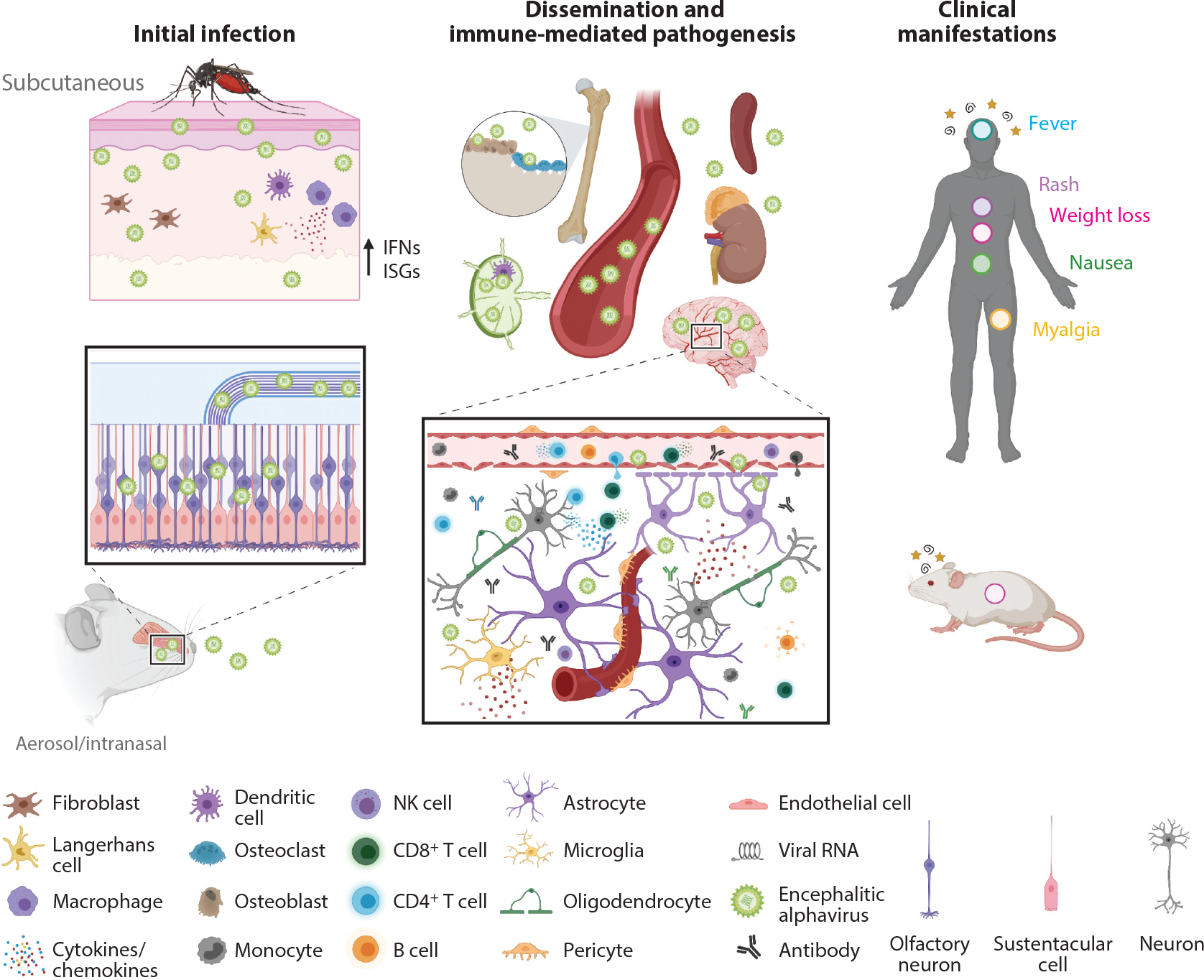Figure 2.

Infection and pathogenesis of encephalitic alphaviruses. Inoculation by encephalitic alphaviruses can occur subcutaneously through the bite of a mosquito or through an intranasal or aerosolized exposure. In the skin, some encephalitic alphaviruses (e.g., VEEV) will replicate locally in dendritic cells and macrophages, prompting release of type I interferons and expression of ISGs. Virus then travels to the draining lymph node or through the bloodstream to disseminate to peripheral tissues. Other encephalitic alphaviruses, like EEEV, replicate in fibroblasts and osteoblasts but not in lymphoid tissues and do not induce a measurable peripheral inflammatory response. Virus spreads rapidly to the CNS via several routes, including retrograde transport in neurons of the olfactory bulb and trigeminal nerves, hematogenous routes, and across the BBB. Release of proinflammatory cytokines and chemokines alters and compromises the BBB, contributing to further CNS infection. Immune cells are recruited into the brain parenchyma, and resident glia become activated, both of which are essential for control of infection. Nonetheless, activated immune cells can also damage neurons and cause demyelination, which drives the neurological syndromes observed in humans (stars and spirals). Depending on the virus strain, neurons and glia can survive infection and harbor viral RNA after acute infection. Other signs and symptoms of systemic disease include fever (blue circle), rash (purple circle), weight loss (pink circle), nausea (green circle), and myalgia (yellow circle). Abbreviations: BBB, blood-brain barrier; CNS, central nervous system; EEEV, eastern equine encephalitis virus; IFN, interferon; ISG, interferon-stimulated gene; NK, natural killer; VEEV, Venezuelan equine encephalitis virus. Figure adapted from images created with BioRender.com.
